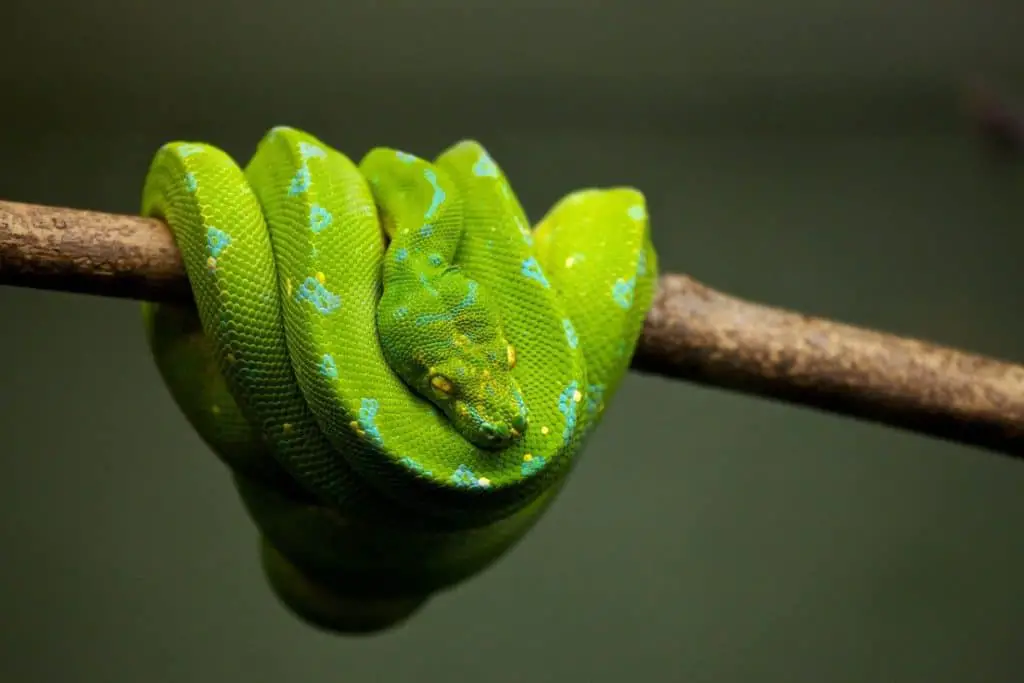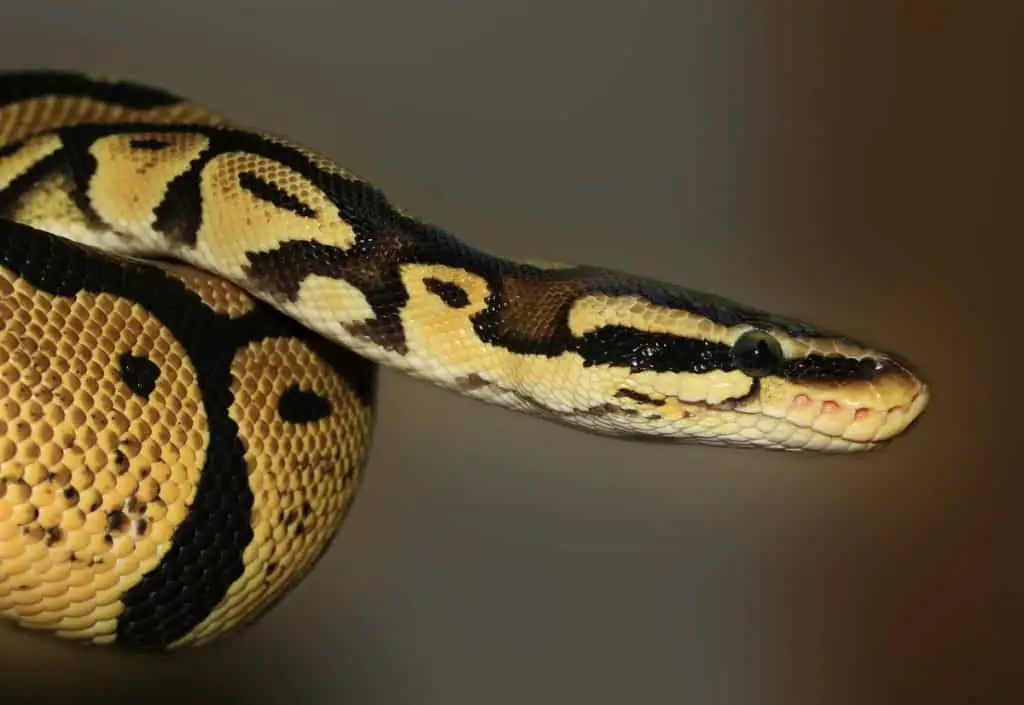With over 3,000 species of snake in the world, it should be no surprise that they come in various colors. However, very few of them have the same combinations and markings. Their markings have evolved to suit their habitat and living conditions.
Snakes generally have colors that match their habitats and surroundings. These help them stay hidden from their prey as well as predators. Generally, arboreal snakes are green, while terrestrial snakes are grey or brown. Snakes that live in deserts are usually brown, yellow, or red.
In this article, I look at some of the different colors and why some snakes change color as they grow.
Do you know how snakes reproduce? Find out in this article I wrote

How Do Snakes Get Their Color?
Snakes come in many different colors and patterns, and the colors are due to pigments in the skin and the physical surface of the snake.
Interference coloring occurs due to the different distances of travel involved between the upper and low surfaces of the scales. The color formed by light scattering is caused by the scattering of short light waves. These are at the blue end of the spectrum.
To give snakes a green color, the blue scattering of light is passed through cells on the snake. These cells provide a yellow filter, and when the blue light passes through, the snakes appear green. If the pigment is missing these cells, called xanthophores, the snake will appear yellow.
Most snakes are various shades of green, with very few blue snakes. However, blue snakes do occur, although this is usually due to a mutation in the xanthophores.
Many snakes appear iridescent. As each scale on a snake is separate and curved, many colors can be seen simultaneously on different parts of their body. As the snake moves, the light also moves, and the snake changes color.
Some snake species appear iridescent because of how the light changes. The light is reflected differently from the top surface of the scale to the bottom of the scale, called interference color. This shows the various colors as the snake moves.
Snakes also contain pigments which are contained in the layers of skin. These pigments give the different species their characteristic markings and colors.
They contain many pigments, including phaeomelanin, yellow or light-brown, and eumelanin, dark brown or black. Grey occurs due to a lower distribution of eumelanin. The melanins are combined with other pigments to give red, white, orange, and yellows.
Did you know that snakes don’t stop growing? Find out more here
Why do snakes have different colors?
Snakes have different colors to help them avoid detection and provide camouflage. This can help them when trying to catch their prey but also helps when trying to avoid a predator. Snakes will try to blend into their environment, so their habitat dictates their color.
While most arboreal snakes are green, snakes that live on the ground are usually grey or brown. In deserts, many snakes are yellow, light brown, or red to help them blend in.
Many species have markings to help them camouflage, with some blending in seamlessly with branches and twigs around them. Not all snakes have various patterns, and many are plainly colored. Their coloring depends on their usual habitat.
Aquatic snakes are similar to other marine animals such as killer whales and dolphins. Their bodies are dark above with a paler underbelly. This stops shadows from their underside giving their position away.
Snakes are masters at keeping hidden, and one of the ways they do this is by using markings on their bodies. These allow them to disguise the outline of their bodies. Different species use a variety of markings, including blotches, lines, and zigzags along their bodies.
Sometimes these blotches do not appear to match their habitat, but the disruptive markings usually disguise an area of the body that would be recognizable by a predator.
Do you know how snakes defend themselves? Find out here
Why are some snakes brightly colored?
While most snakes want to keep hidden from predators and their prey, some are brightly colored. The bright colors are used to warn other animals that they are dangerous. There are many examples throughout nature of highly dangerous animals that are brightly colored.
Once a predator has tried to eat a brightly-colored animal and either got stung or treated to a dose of poison or venom, they will often leave any animal similar to them alone.
Not all brightly-colored snakes are venomous, and many mimic other species to avoid being eaten. The harmless milk snake is similar in color and markings to the much deadlier coral snake, although it couldn’t do much harm if attacked.
Once predators have attacked a dangerous snake with bright colors, they will be much less inclined to repeat this mistake.
Bright colors are only good for snakes that move about during daylight as the colors will be less noticeable at night. However, if a snake is disturbed from its resting place during the day, the bright colors may stun the attacker long enough that the snake can get away. This is called startled coloration.

Some species startle predators by showing brightly-colored parts of their bodies not seen at first. When threatened, some will open their mouths, showing brighter colors than the rest of the body. Others will raise their tails, showing red or orange scales when provoked. Although these colors will not stop a predator, they may stun the attacker long enough to allow the snake to escape.
Do you know where snakes live? Find out here
Mutations
Some snakes look entirely different from others, which could be due to a mutation. Albino animals, including snakes, are caused by mutations of genes that affect melanin production. Melanin controls the color, and snakes and snakes with low melanin appear pink or white. Snakes with a high amount of melanin appear almost black.
Other mutations have been seen, including red and yellow snakes, and removing just one pigment can make a snake appear completely different.
Because of the bright colors that can be seen in some of these snakes in the wild, they often don’t survive long as they have none of the camouflage needed.
If you want to know how snakes eat their prey, I have written an article here

